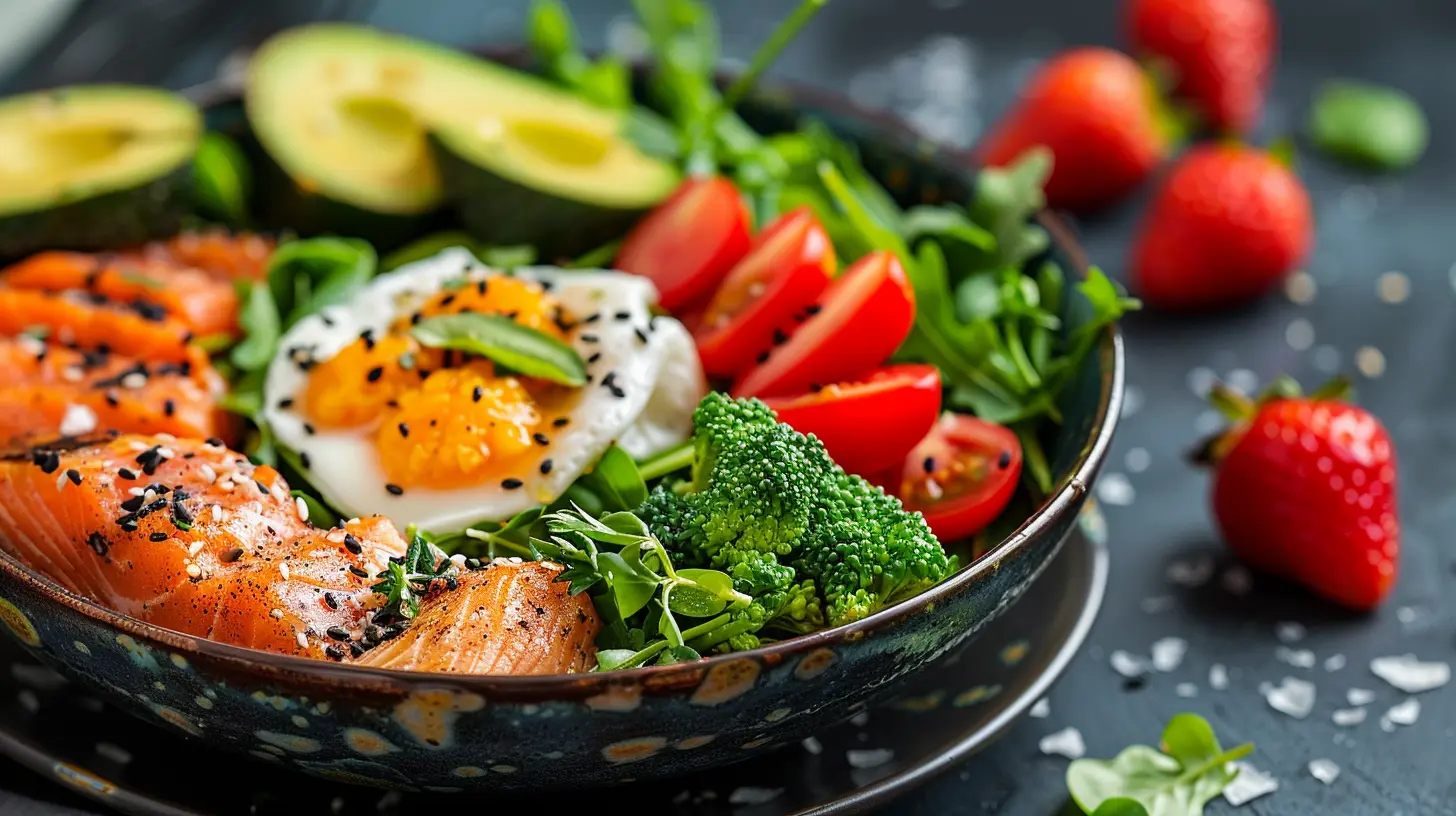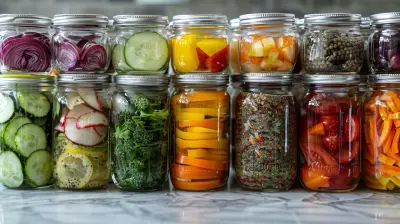How to Reintroduce Carbs After Keto Without Gaining Weight
25 October 2025
So, you’ve been living that keto life—low carbs, high fats, and your energy has been running on ketones instead of good old glucose. Maybe you’ve reached your weight goal or just want a bit more flexibility in your meals (because hey, bread exists). But the big question looms: How do you reintroduce carbs without piling the pounds back on?
Let’s walk through it together. We’ll keep it simple, real, and totally doable.
Why You Need to Be Careful When Reintroducing Carbs
Coming off keto isn’t like flipping a light switch—it’s more like easing into a warm bath. Sudden carb overload after weeks (or months) of keto can wreak havoc on your digestion, spike your blood sugar, and yes, cause quick water weight gain and even fat storage. Why? Let’s break it down.When you’re on keto, your body depletes its glycogen stores. Glycogen, which is stored in your liver and muscles, binds to water. When you reintroduce carbs, your glycogen stores refill—and so does the water that comes with it.
> For every gram of glycogen, your body stores about 3 to 4 grams of water. So, hello scale jump!
But fear not! That initial bump isn’t fat—it’s water. The trick is managing the reintroduction smoothly to avoid real fat gain and keep your progress intact.
Phase 1: Prep Your Mindset
First things first—don’t panic if you see the scale move a bit. That number doesn’t define your success. Your body is just adjusting, and honestly, it knows what it’s doing.Instead of obsessing over every ounce, watch how your clothes fit, your energy levels, your workouts, and your digestion. Those are the real signals of success.
Also, say goodbye to the “carbs are evil” belief. Carbohydrates aren’t the enemy—they’re fuel. The key is how and which you bring back.
Phase 2: Choose the Right Carbs
Not all carbs are created equal. You didn't battle carb cravings for months just to dive face-first into donuts and white bread, right?Here’s what you want to focus on:
✅ Complex Carbs
These are your slow-digesting, fiber-packed superstars. They help you feel full longer and keep your blood sugar stable.- Quinoa
- Brown rice
- Sweet potatoes
- Rolled oats
- Legumes (chickpeas, black beans, lentils)
- Whole fruits (apples, berries, bananas in moderation)
❌ Simple, Refined Carbs
These guys are quick digesters. They spike your blood sugar, cause cravings, and often leave you hungry again an hour later.- White bread
- Sugary cereal
- Soda and fruit juices
- Candy
- Pastries
Rule of thumb: If it’s white, processed, or sweetened—skip it (at least for now).
Phase 3: Add Carbs Gradually
Your body needs time to adapt, plain and simple. Going from 20g of carbs to 200g overnight is a shocker for your system.Here's a simple plan:
Week 1-2: Add 25-50g of carbs per day, mostly from veggies and berries. Think roasted carrots, blueberries, and extra broccoli.Week 3-4: Increase to 75g-100g per day. Add sweet potatoes, some quinoa, and maybe an extra piece of fruit.
Week 5 and beyond: If you're feeling good—steady energy, no cravings—you can go up to 100-150g/day depending on your activity level and goals.
Listen to your body. Are you feeling sluggish, bloated, or extra hungry? That’s a sign to pull back and reassess.
Phase 4: Keep Protein High
Protein is your best friend during this transition.Why?
- It keeps you full
- Maintains your muscle mass
- Helps stabilize blood sugar when paired with carbs
Aim for 0.8 to 1 gram of protein per pound of body weight. That might sound like a lot, but it’s worth it.
Good sources:
- Eggs
- Chicken breast
- Turkey
- Greek yogurt
- Tofu
- Salmon
Pair your carbs with protein, always. Having an apple? Add some peanut butter. Eating rice? Pile on that grilled chicken.
Phase 5: Don’t Ditch the Fats Completely
Yes, keto is fat-heavy—but don't swing the pendulum all the way in the other direction.Healthy fats are still essential. They regulate hormones, keep you satiated, and support brain health.
Keep these in your post-keto life:
- Avocados
- Olive oil
- Nuts and seeds
- Fatty fish
- Coconut oil (in moderation)
Instead of piling on butter like it’s going out of style, just aim for balance.
Phase 6: Timing Matters
When you eat your carbs can make a difference.Try these timing tips:
- Carb-Up Around Workouts: Eat your complex carbs before or after your workouts. Your muscles will soak them up like a sponge for recovery and fuel.- Don’t Carb-Load at Night: Eating a big bowl of pasta right before bed? Not ideal. Your metabolism slows down at night, and you’re not burning much.
- Spread Them Out: Don’t save all your carbs for one meal. Spread them across breakfast, lunch, and dinner to avoid spikes.
Phase 7: Watch Portions, Not Just Types
Even healthy carbs can lead to weight gain if you eat too much.Start small—think ½ cup of cooked rice or one small sweet potato. Portion control is your secret weapon.
A helpful visual?
- 1 cup of cooked grains = a tennis ball
- 1 medium piece of fruit = a baseball
- ½ cup beans = a light bulb
Measuring cups work, but once you get the hang of it, you’ll eyeball like a pro.
Phase 8: Track and Adjust
You don’t have to log your food forever, but tracking can be super helpful in the beginning.Apps like MyFitnessPal, Cronometer, or Carb Manager can help you:
- Keep your carb intake in check
- Spot patterns in energy or hunger
- Adjust based on your goals
After a few weeks, you’ll intuitively know what works.
Phase 9: Stay Active
Movement makes everything smoother.When you reintroduce carbs, one of the best things you can do is get moving. Physical activity:
- Improves insulin sensitivity
- Helps shuttle carbs into your muscles for energy
- Burns off some of those extra glycogen stores
Strength training, walking, cycling, dancing—it all counts.
Pro tip: Doing a 10–20-minute walk after meals can help stabilize blood sugar. It’s a small change that makes a big impact.
Phase 10: Stay Hydrated and Support Digestion
With glycogen refilling and water retention changing, hydration needs may shift. Don’t skimp on water.Also, reintroducing carbs can sometimes cause bloating or digestive discomfort. Combat this with:
- Plenty of water
- Herbal teas (peppermint, ginger)
- Probiotics (yogurt, sauerkraut, kefir)
- Chewing your food slowly (seriously, don’t inhale it)
Should You Still Avoid Sugar?
Look, we’re all human. Enjoying the occasional treat isn’t a crime, but daily sugar hits? Not ideal.Stick to natural sugars from fruit, and limit added sugars to under 25g/day if you can. Use stevia or monk fruit for sweetening if you need a fix.
What If You Start Gaining Fat?
Okay, let’s say you think you’re gaining more than just water. What now?Don’t panic. Here’s your checklist:
1. Are you tracking portions?
2. Are you pairing carbs with protein and fiber?
3. Are you moving daily?
4. Are you eating high-quality carbs, not junk?
Fix what’s off, and give your body time. If fat gain continues, reduce your daily carb intake by 25g and reassess after a week or two.
The Bottom Line
Reintroducing carbs after keto is all about being smart—not scared.You’ve done the hard part already. Now it’s about finding a balance that lets you enjoy food, maintain your progress, and feel good in your body.
It’s not keto or bust. It’s about sustainable, healthy habits that work long-term.
So go ahead—have the sweet potato. Your body knows what to do.
all images in this post were generated using AI tools
Category:
Keto DietAuthor:

Eileen Wood
Discussion
rate this article
1 comments
Meagan Ramirez
Great tips! Remember, balance is key. Enjoy reintroducing carbs mindfully and savor each bite. Your journey towards a healthy relationship with food is inspiring—embrace the process and trust your body to find its rhythm!
October 30, 2025 at 3:59 AM

Eileen Wood
Thank you! I completely agree—finding balance and savoring each bite is essential for a healthy relationship with food. Embracing the process truly makes a difference!


